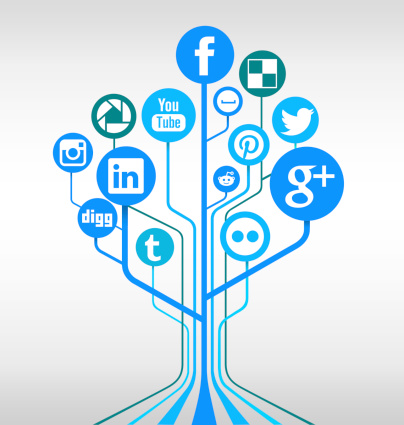
Now that the majority of brands have established a social media presence, they’ve shifted from developing social media strategies to asking how they can use them to maximize patient engagement. But in order to identify the value of their efforts, marketers must gain an understanding of who they’re reaching, the social channels consumers prefer and most importantly, what content will strengthen patient relationships.
Who are the BFFs of Healthcare Social Media?
So who are the BFFs (Best Friends Forever) of healthcare social media marketing? Or in other words, which healthcare consumers are most receptive to social media campaigns? To find out, adults 18+ who consider social networking sites to be a valuable source of healthcare information were profiled. According to the Nielsen Scarborough MARS Healthcare Study, BFFs tend to be young, as almost half are 25-44 years old. They tend to skew slightly female, predominantly white, with moderate education (high school or some college) and an average annual household income of about $69,000.
While half of BFFs consider themselves to be in excellent or very good health, 75% have had a family member hospitalized during the past three years. Additionally, they’re influencing the choices of those family members, as 73% say that friends and family come to them for advice about healthcare and medications. So while BFFs of healthcare social media account for only about 8% of the US adult population, their influence is much farther reaching when it comes to healthcare decision making.
Preferred Social Media Outlets
Facebook is the primary social media outlet for BFFs of healthcare social media marketing, with 68% saying they have visited the site during the past 30 days. YouTube comes in at a close second, with a little over half (53%) visiting that site during the past month. Instagram ranks third at 18%.
While there are many similarities among BFFs that frequent each social media outlet, there are some unique aspects that marketers should consider. Facebook and YouTube reach a slightly older audience, average age 38 and 37 respectively, while, not surprisingly, Instagram BFFs skew younger, with an average age of 32. In addition to Instagram’s more youthful audience, these BFFs are also more likely to belong to an ethnic group, with almost half identifying themselves as African-American or Hispanic. YouTube offers the best opportunity to reach male BFFs, as 42% of its audience is male, compared with 36% for Facebook and 25% for Instagram. This highlights how important it is that marketers use a variety of social media outlets and accommodate each audience as they develop their content strategies.
Content to Drive Action and Engagement
Examining the lifestyles, attitudes and healthcare behaviors of social media audiences provides great insights into the types of content that will resonate with patients. The more closely the content matches the patients’ interests, the more engaged your audiences will become with your social media outreach.
So which topics should marketers leverage most? When it comes to health, stress is a subject that just about everyone can relate to. In fact, two out of three BFFs consider themselves to be very or somewhat stressed, and about one-third say their stress level is much or somewhat higher than it was a year ago. Weight management, exercise tips and healthy eating are other topics that will resonate with BFFs, as three out of five believe they are overweight or obese, while half say they’re currently dieting or have been on a diet plan. Parenting, maternity care and pediatrics are also hot topics. BFFs are 48% more likely to be planning the birth of a child during the next 12 months, and 44% already have a child under 18. Additional interests include alternative and holistic approaches to medical practice and emerging healthcare treatments.
It’s also important to understand how BFFs will respond to your social media content, specifically what actions are they likely to take as a result of the exposure. When asked what actions they have taken during the past year as a result of exposure to healthcare advertising, BFFs of social media marketing reported being 128% more likely to discuss a healthcare ad with a friend or relative and 102% more likely to conduct an additional online search for information. These percentages indicate that BFFs are hungry for valuable healthcare content and further emphasizes the influential impact that BFFs of social media marketing can have in building awareness of your services.
Increasing the value of your social media presence takes planning and patience, but the payoff can be substantial as it reaches a highly influential group of healthcare consumers. Your social media BFFs are your brand ambassadors, and they have the power to propel a single post through their channels and reach thousands of potential consumers. Understanding who they are, their interests, and preferred social media outlets will allow you to build a successful social media strategy where the recommendations of BFFs build significant and far-reaching marketing momentum.

